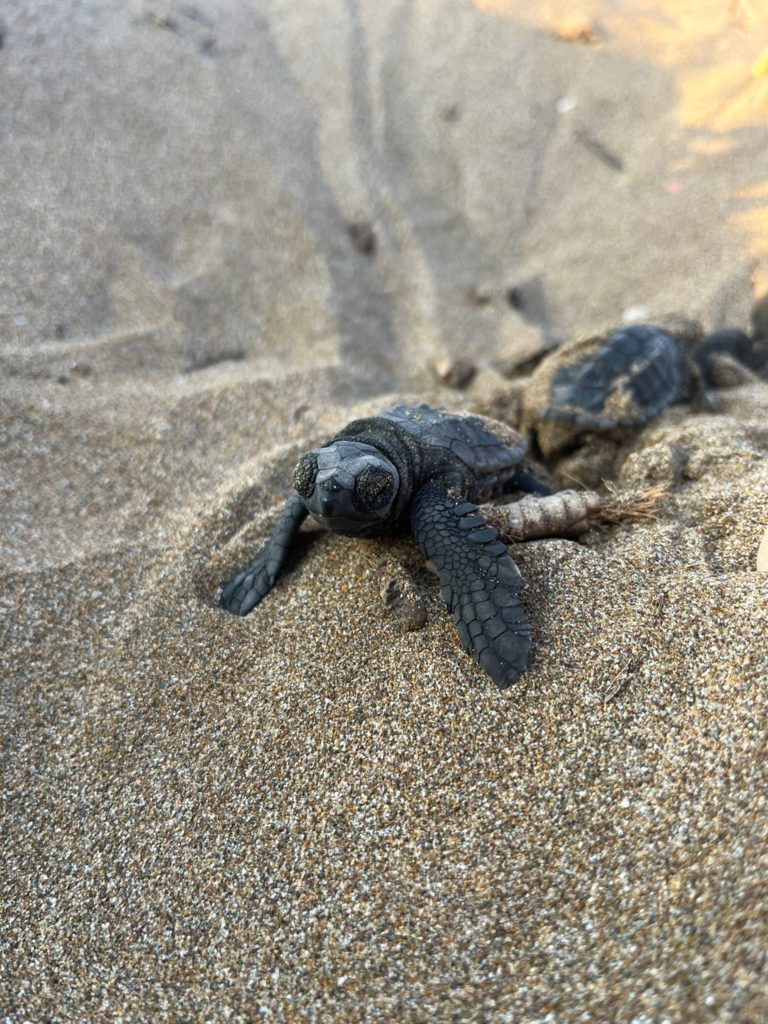New research shows that turtles are responding to climate change by nesting earlier.
Researchers monitoring nesting green and loggerhead turtles in Cyprus have discovered they are returning to their regular nesting spots earlier each year to compensate for rising temperatures.
In sea turtles, temperature determines the biological sex of offspring, with more females born when it is warmer, as well as fewer successful hatchings when it gets too hot.
Turtles also have "natal philopatry", which means they return to nest in the area where they themselves hatched.
A research team from the University of Exeter and the Society for the Protection of Turtles predicts - using three decades of data - that by 2100 there will be hardly any new loggerhead turtle offspring produced, unless the turtles counter the higher temperatures by moving their nesting season forward.
After placing temperature loggers into nests at night when the females are laying their eggs and retrieving them once the nest hatches, the researchers estimated that the turtles need to nest 0.5 days per year earlier to maintain the current sex ratio, and 0.7 days per year earlier to prevent egg hatching failures.
But their data showed that the loggerhead turtles are indeed already nesting earlier in the year, with returning females advancing the start of nesting by 0.78 days per year since 1993.
This means that at least for now, the turtles are doing enough to ensure their eggs continue to hatch by nesting earlier in more ideal temperatures.

Professor Annette Broderick said: "This is a bit of good news, as we've shown that these turtles are responding to the elevated temperatures brought about by climate change by shifting to cooler months to nest.
"There is no guarantee that they carry on doing this though - it's very much dependent on how much the temperatures rises, and also what they are eating. If the timing of production in terms of where their food's coming from shifts, then they could start to be disconnected ecologically between where they forage and where they breed."
The research team have also published a study using 31 years of data on over 600 individual green turtles nesting at the same beach in North Cyprus to see what influences when they start laying each year, and how we can explain the advancement we have seen over the past three decades.
The research team found that individual turtles were adjusting the timing of nesting based on sea temperature, laying eggs 6.47 days earlier for every 1°C increase in ocean temperature. They calculated that temperature accounted for around 30% of the advancement, with more experienced females and those laying more clutches also nesting earlier.
Lead author Mollie Rickwood, from the University of Exeter's Centre for Ecology and Conservation, said: "To know if the advancement we see now will continue into the future, it is crucial to understand the combined effects of changes in, for example, the age structure of the population, and how individual turtles respond to environmental change."
Dr Damla Beton, from the Society for Protection of Turtles (SPOT), added: "Although our turtles appear to be coping with current rising temperatures, it is unclear how long they may be able to do this before conditions in Cyprus are no longer suitable, but cooler locations in the Mediterranean may become available for them to nest."
"Phenological shift mitigates predicted impacts of climate change on sea turtle offspring" is published in the journal Endangered Species Research.






